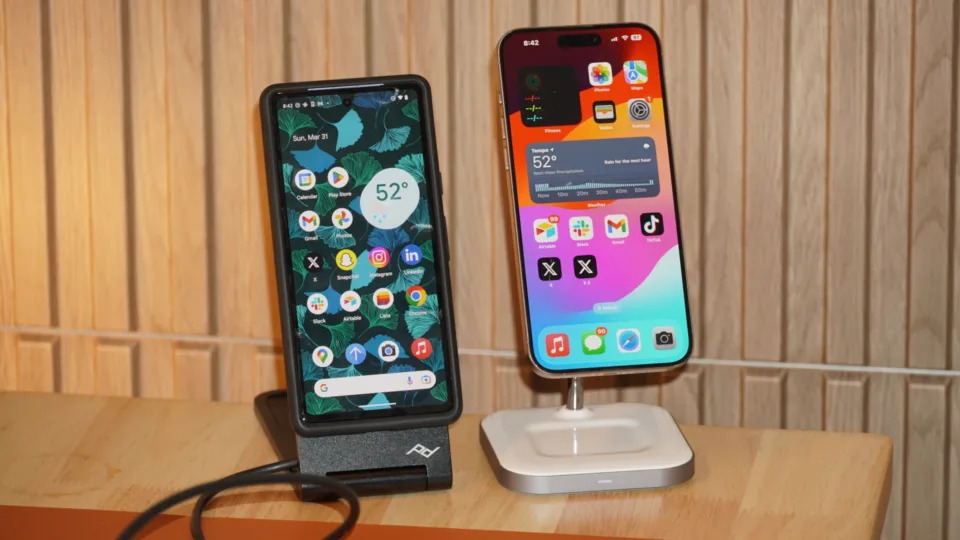The Confusing Qi2 Launch: Magnets Optional, But Wasn't That the Point?
Apple's decision to hand over its proprietary MagSafe technology to the Wireless Power Consortium (WPC) for inclusion in the Qi2 specification was a surprising move—one that promised to revolutionize wireless charging across the industry. Yet, as the Qi2 launch unfolds, it appears that what could have been a groundbreaking advancement is now mired in confusion, particularly regarding the role of magnets.
For context, Qi2 is the latest generation of the wireless charging standard used by nearly all wirelessly charged devices, aside from a few exceptions like smartwatches. This new standard brings significant upgrades, including a bump in maximum wireless charging speed from 7.5W to 15W. More excitingly, it introduces the Magnetic Power Profile (MPP), an open-source adaptation of Apple's magnetic connection system. In theory, this means that any Qi2-compatible device should be able to connect seamlessly with MagSafe chargers and other magnetic accessories.
However, recent developments have cast doubt on this expectation.
Android expert Mishaal Rahman recently revealed that Qi2 and MPP are not as intertwined as many believed. Initially, it was assumed that for a device or accessory to earn the Qi2 certification, it would need to support the MPP. Rahman's findings, however, suggest that this isn't the case. A device can be Qi2-certified and boast 15W wireless charging without including any magnetic capabilities.
This revelation raises concerns about the Qi2 branding and its implications. According to a WPC press release from November 2023, products meeting Qi2 standards but lacking magnets will use the traditional Qi logo, while those with MPP will display a new Qi2 logo with a ring to indicate magnetic functionality. This differentiation, while clear in theory, complicates the consumer experience. The original Qi standard now spans both 7.5W and 15W charging speeds, but without a clear way to distinguish between them based on the logo alone.
Android Central reached out to the WPC for clarification on these Qi2 certification and branding requirements. At the time of writing, no response has been received, but the article will be updated if and when they do.
A Missed Opportunity?
The primary appeal of the Qi2 standard lies in its Magnetic Power Profile, which was supposed to bring the MagSafe experience to Android and other platforms. The fact that devices can achieve Qi2 certification without supporting MPP creates a perplexing situation, especially for those who have been following the development of MagSafe on Android.
Why has the WPC allowed manufacturers to release Qi2-certified products without magnets? It seems unnecessary and contradictory to the very essence of what Qi2 was supposed to achieve. While Qi2’s 15W charging speed is undoubtedly a significant improvement, the omission of magnets feels like a step backward. After all, companies like OnePlus have already bypassed the 7.5W limit with their proprietary fast charging solutions.
The WPC’s decision to permit Qi2 devices without magnets, while still forcing them to use the old Qi logo, only adds to the confusion. It’s a decision that seems at odds with the goal of simplifying and enhancing the wireless charging experience.
Currently, most Qi2-enabled products do include MPP, making them MagSafe-compatible. If manufacturers continue to integrate magnets into Qi2 chargers and accessories, the lack of a mandatory requirement for magnets might become a minor footnote in the history of the standard. However, the absence of flagship Android phones with Qi2 support is concerning—only the HMD Skyline has taken that leap.
In summary, the rollout of Qi2 has been anything but smooth. Major players like Google and Samsung have had ample opportunity to embrace the standard, yet they’ve opted out. Samsung’s Galaxy S24 series and Galaxy Z series, as well as Google’s Pixel 9 lineup, all skipped Qi2, leaving us wondering why.
The whole point of Qi2 was to bring the MagSafe experience to a wider audience. But as things stand in 2024, it seems that vision is far from being realized.
https://github.com/dashpradeep99/https-github.com-miguellgt-books/issues/1
https://github.com/frankarendpoth/frankarendpoth.github.io/issues/7
https://github.com/hitherejoe/GithubTrending/issues/13
https://github.com/ruler88/GithubDemo/issues/10
https://github.com/maykbrito/nlw-10-copa/issues/1
https://github.com/geon/geon.github.com/issues/15
https://pastelink.net/7086wijo
https://linksome.me/tefcusecderswe
https://open.firstory.me/user/cm09aynwy001p01yqf961ghb1
https://wokwi.com/projects/407178358632428545
https://community.wongcw.com/blogs/824736/The-Confusing-Qi2-Launch-Magnets-Optional-But-Wasn-t-That

